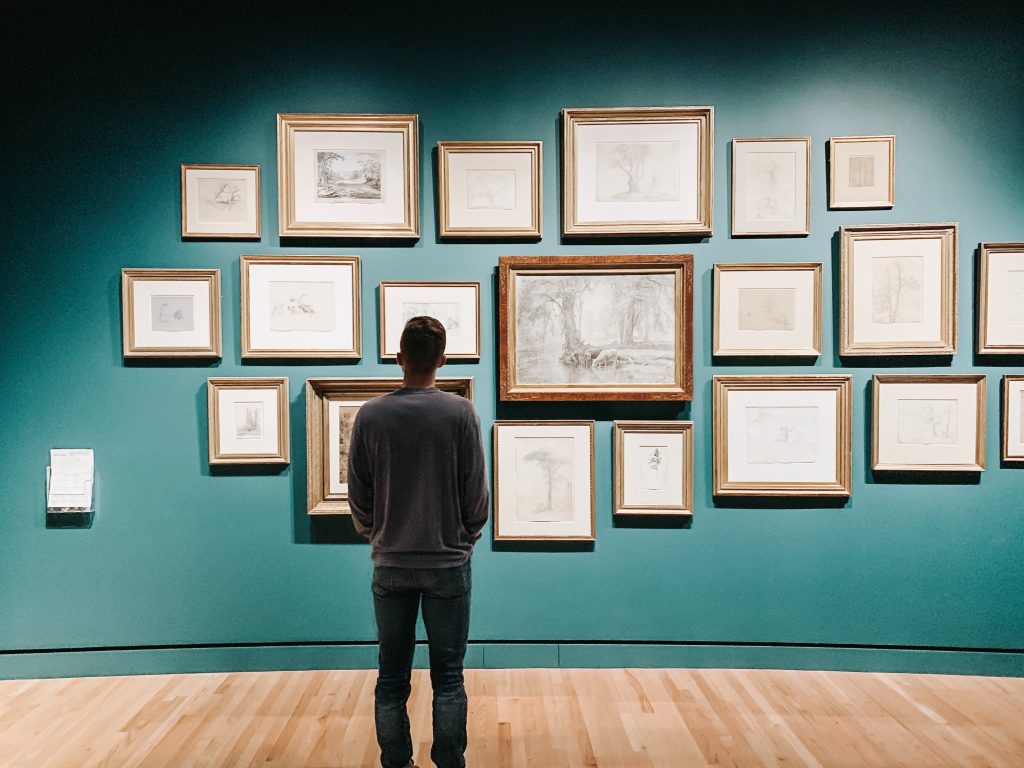Nillumbik Prize for Contemporary Art 2021

About
Arts Law regularly reviews the terms and conditions of competitions and rates them out of five stars. Our review looks broadly at the terms and conditions of a competition. In particular, we look closely at how a competition deals with an entrant’s copyright and moral rights, and consider this in light of the prize. Entrants should always take into account the possible profile-raising which may result from being a finalist or winner.
By accepting the terms and conditions of a competition, entrants should be aware that they may be entering a legally binding contract.
For more information, see our free information sheet on competition conditions. Artists are welcome to contact Arts Law for legal advice on the terms of a competition. We also invite competition organisers to contact Arts Law for best practice assistance to make their terms and conditions fairer for artists.
Please note: Prior to February 2018, Arts Law rated out of five stars only the terms of a competition which dealt with copyright and moral rights (using our previous rating systems https://www.artslaw.com.au/advocacy/prizes-and-competitions). Arts Law’s competition reviews are now more holistic, such that our rating out of five stars now reflects a broad review of all the terms and conditions of the competition.
Review
Arts Law has reviewed the terms and conditions of the Nillumbik Prize for Contemporary Art 2021, run by the Nillumbik Shire Council (Council). This is a biennial acquisitive prize which is open to all artists (including solo artists, duos or collectives) over 18 years in 2021 and either an Australian citizen or a permanent resident living or working in Australia.
The theme of the 2021 Nillumbik Prize for Contemporary Art is ‘Return’ and artists can submit their artwork in any form, eg painting, photography, performative, video, sound, digital, etc.
Entrants should read the eligibility requirements including: the work must have been created after May 2019; shortlisted entries in previous Nillumbik prizes and artworks that have been awarded another art prize are also not eligible; there are also eligibility requirements around the “Local Prize”.
The deadline for this competition is midday, 30 November 2020.
Click here for further details about this competition and how to enter. To read the terms and conditions, make sure to download the ‘conditions of entry’ PDF.
Arts Law has rated this competition 4 out of 5 stars.

The Prizes
These are three prizes on offer which will be announced on 15 July 2021:
- Open Prize – $20,000 acquisitive.
- Local Prize – $10,000 acquisitive (this prize is only open to artists who live, work or study in Nillumbik. Local entrants will also automatically be considered for the Open Prize).
- People’s Choice Award – $500 cash prize sponsored by the Montsalvat artist community.
There will be an exhibition of the finalist’s works at the Barn Gallery, Montsalvat, from 6 May to 1 July 2021.
All entrants will be notified whether they are a finalist by 18 December 2020 and prize recipients will be notified at the opening of the exhibition on 6 May 2021.
Copyright
This competition deals fairly with copyright. The terms state that the acquisitive prize recipients will retain their copyright in the artworks. This is what we like to see. For clarity, it would be better if there was a positive statement stating that all entrants, not just prize winners, retain the copyright in their artworks, though this is implied.
Finalists and prize recipients must grant the Council and its partners and sponsors, a fee-free, non-exclusive licence from 18 December 2020 to 3 July 2021 to:
‘reproduce the selected work in material form, to photograph, publish and/or communicate it to the public, for the following non-commercial prize-related purpose: a. Marketing, publicity, educational, archival and publication uses for NSC, Montsalvat, the Prize and its exhibition in all media, including but not limited to electronic/digital, broadcasting and print media; and b. Anything incidental to such purposes’.
These terms are good practice and it especially good to see that the licence is only required from finalists and winners, and not all entrants, and that it is non-commercial, for prize related purposes and a set period of time. We wonder whether use of works online means the works may effectively remain online after the end of the exhibition on 3 July 2021. It would be good if this were clarified. It would also be good to spell out who exactly are the Council’s sponsors and partners.
Moral rights
Under the law, an artist has moral rights, including the right to be credited for their work and for their work to be adapted or used in a way that doesn’t affect their integrity, unless permission is first obtained. That is, there can be no derogatory treatment of their work (eg no changes to their work or uses of it, which affect their artistic integrity or reputation). These moral rights also apply to performers who make sounds (so not mimers), which means they need to be attributed when performing live.
We were pleased to see that the terms recognise an artist’s right to be credited for their work, as they make it clear that both the Council and Montsalvat will credit each of the artists as the creators of their artworks.
Turning to the moral right of integrity, the terms state that the Council and Montsalvat will ‘reproduce the artwork whenever possible in full’. For this to be best practice, we would suggest that the terms include a sentence to the effect that the Council and Montsalvat will always consult the entrants before making any changes to an image of the artwork , or at least where the changes are not reasonable. (Cropping might be considered reasonable.)
The terms also state that ‘details’ of the work will be used at the organiser’s discretion. This may be ok, but when it comes to works by Aboriginal or Torres Strait Islander people, it may be culturally insensitive to omit certain details provided by the artists. It would be best if the entrant could be consulted if details only are to be used. For clarity, there could also be a term saying the organiser will include a notice of cultural attribution where notified by an entrant.
Other things to consider
As there are two acquisitive prizes, the terms rightly require the entrant to be the owner of the artwork. If there is more than one creator, the entrant must ensure that all creators authorise the submission of the artwork in writing.
The terms require the entrants to warrant that they have created the work or that it has been a “product of their personal supervision or intervention” and that their work “does not infringe the copyright, moral rights or other rights of third parties”. The entrant will also be required to indemnify the Council and Montsalvat for any loss they may incur which was caused by a breach of the warranties. This term is a standard term, though it is one that entrants should be aware of when entering.
It is good that insurance is covered while works are on loan. It’s also good that the Council will conduct a condition report of the work on arrival and departure. It would be good if the entrants could see that report, to avoid any disputes down the track about the condition of their works. For example the terms could say that the Council will prepare a Condition Report for each work upon receipt. If any defects are found, the artist will be notified prior to hanging.
The artworks in the finalist exhibition (with the exception of the acquisitive prize artworks) can be available for sale. It would be preferable if the terms made clear that the artist will set the sale price. The terms state that the price listed will include 10% for GST and a 33.3% commission for Montsalvat. This is fair.
The Council reserves the first option to purchase an artwork. However the time frame in which to do this could be specified eg up to the end of the exhibition, or within 48 hours of an offer to purchase an artwork being made by a third party.
Finalists who are represented by a commercial gallery should be aware that they will be required to arrange and enter into a contract between the finalist, their gallery and Montsalvat regarding the split of the commission. If the finalist does not enter into a contract, Montsalvat will automatically be entitled to 33.3% of the commission. While the terms reasonably try to avoid charging the finalist twice for commission, it would be better if they specify a percentage evenly split between Montsalvat and the commercial gallery (eg a commission of 40% in total, with 20% each to Montsalvat and to the gallery), which would apply regardless of whether there is a contract in place. We would also suggest that the terms should specify that the finalist will receive payment within 30 days of Montsalvat’s receipt of full payment from the buyer.
Entrants should note there are certain attendance and availability requirements for the finalists. Such requirements include finalists having to make themselves and their works available for certain ‘marketing and media opportunities’ and they must also attend the finalist exhibition, or send someone in their place. It would be fairer to say that finalists only need to make themselves available for marketing and media opportunities where reasonable for then to do so, and also a term covering payment of a finalist’s reasonable travel costs for this.
The finalists have to collect their artworks on the last day of the exhibition and after that will be charged a daily storage fee. Only allowing one day to collect the artworks isn’t reasonable. There is no mention of when non-finalist entrants must collect their artworks but it seems that these are only delivered digitally.
Finally, it would be useful to include a term describing what happens with the exhibition if there are COVID-19 restrictions in place.
Overall, this prize offers some excellent cash prizes and a profile raising opportunity and we commend the organiser for its respectful treatment of artists. For a perfect rating, the matters identified above could be addressed, in particular including a term stating that there will be no changes to the reproduction of a work without an entrant’s consent.
The Council was not in a position to update its Terms and Conditions for the current prize but we are really pleased that they’ve indicated they are interested in engaging with Arts Law to make the terms more artist friendly for next time.
We suggest that entrants read the terms and conditions for any further requirements.
You can lodge a query with us here if you would like to obtain advice from Arts Law about this competition.
Further Information
Please email us at [email protected] to tell us about any competitions or prizes you think we should check. See more about Arts Law’s campaign to improve competition terms and conditions in the Prizes and Competitions section of our website.



